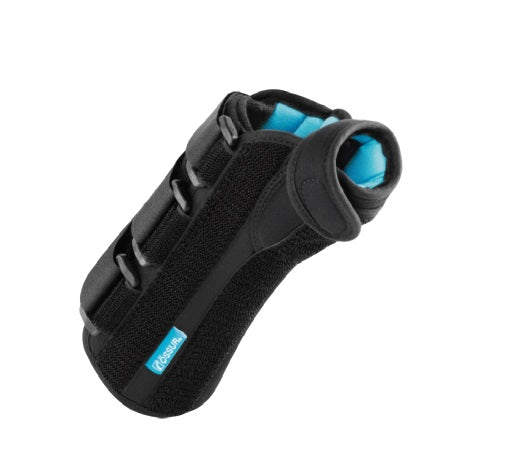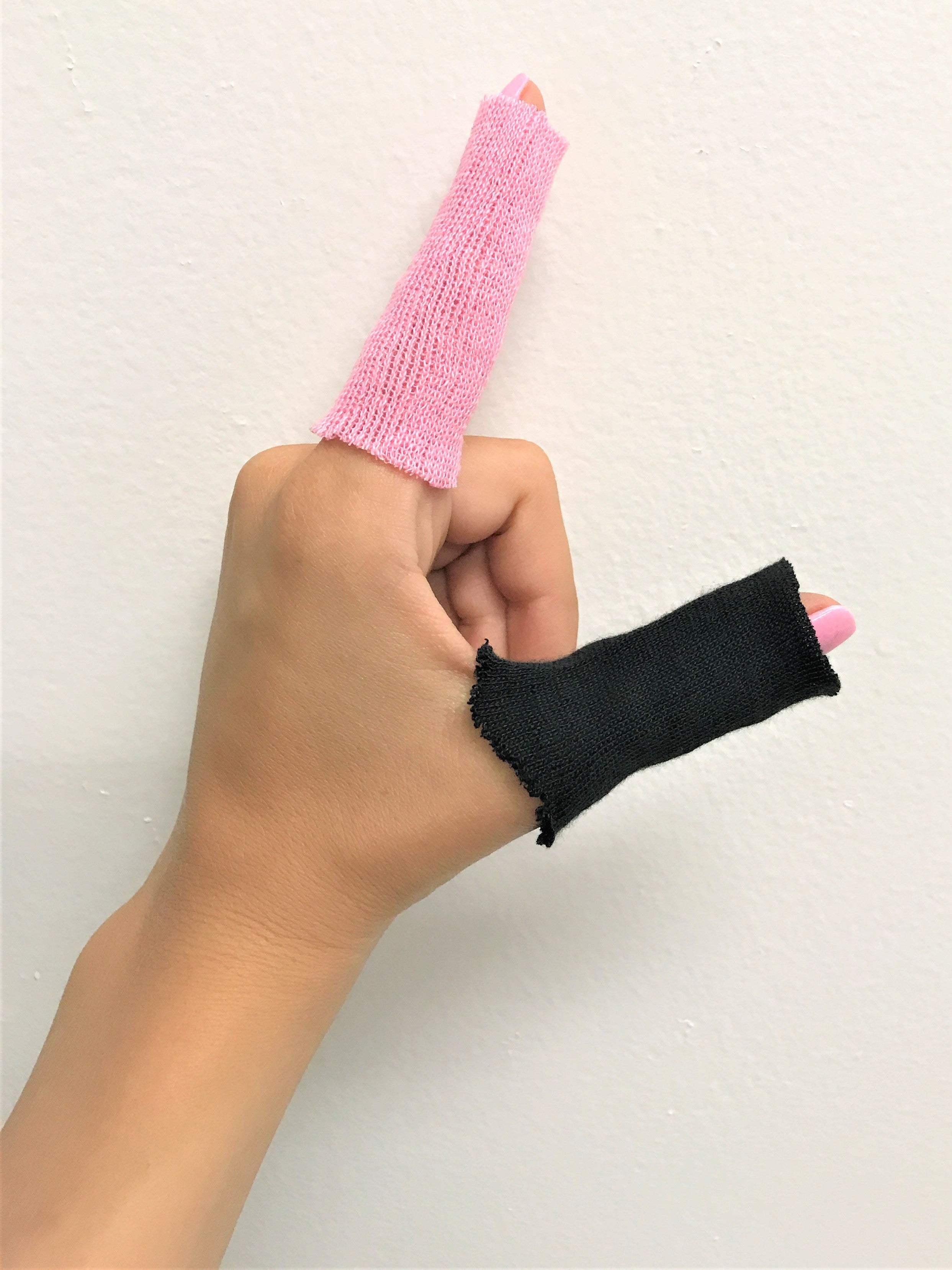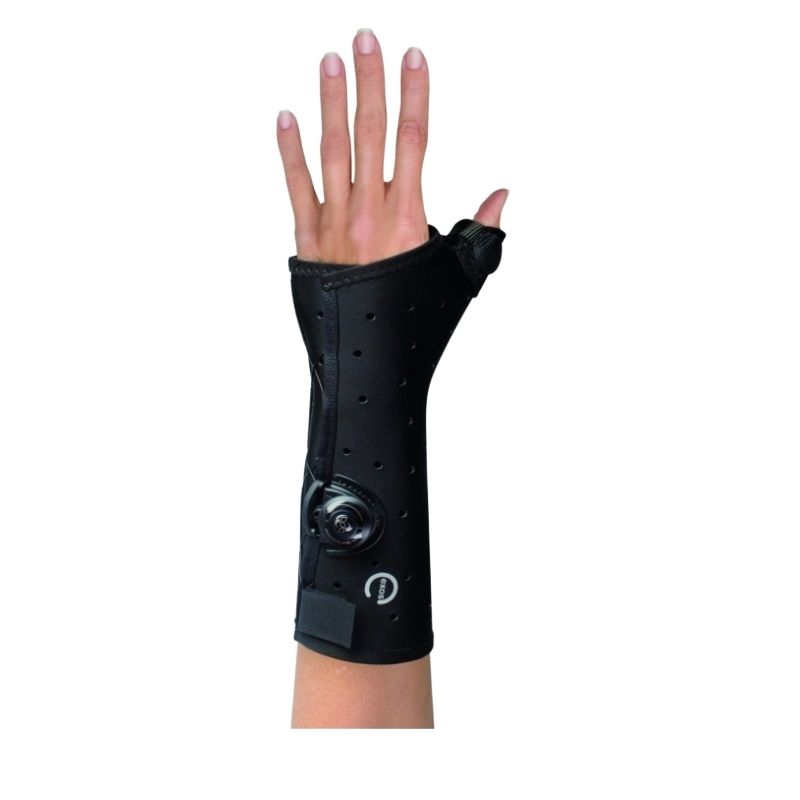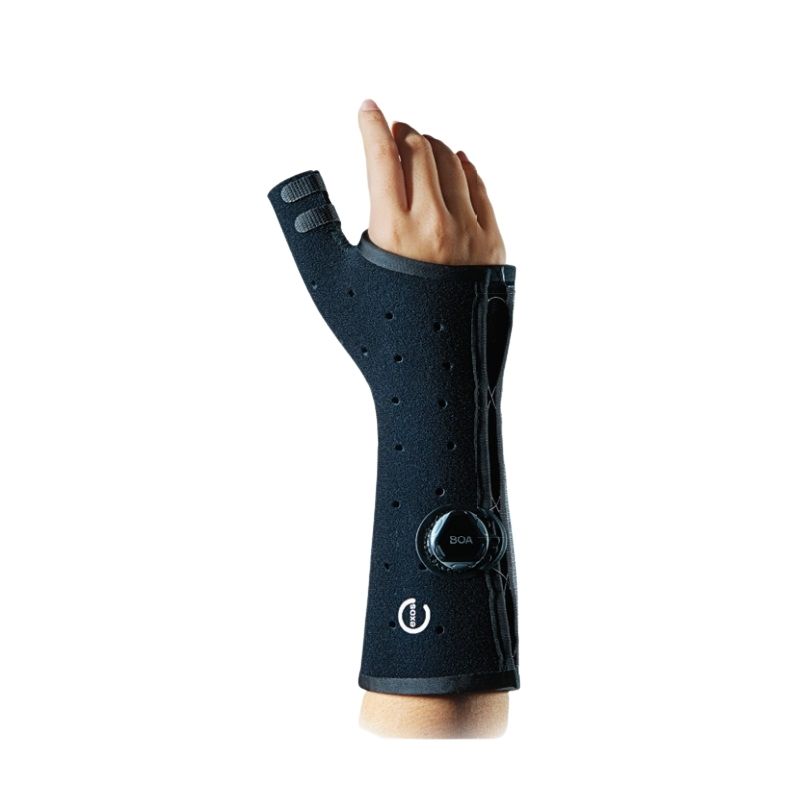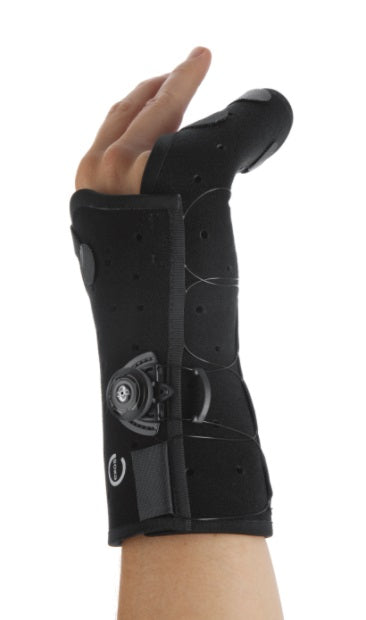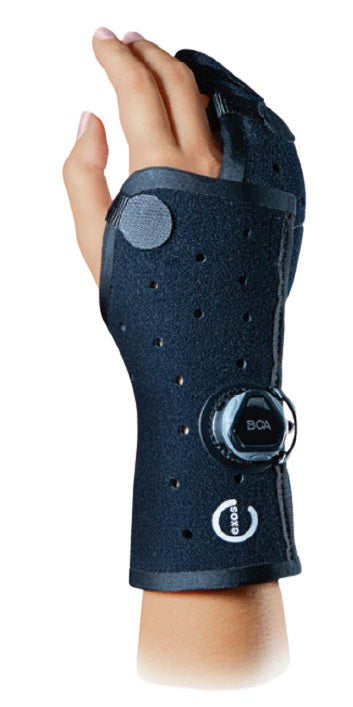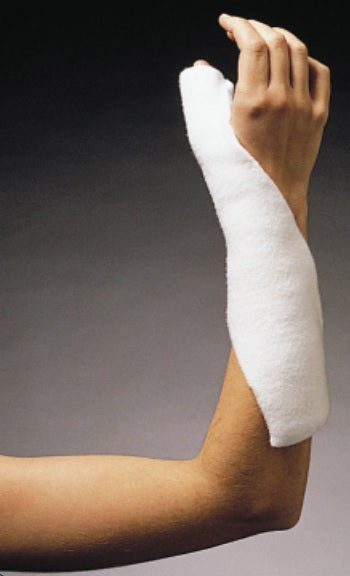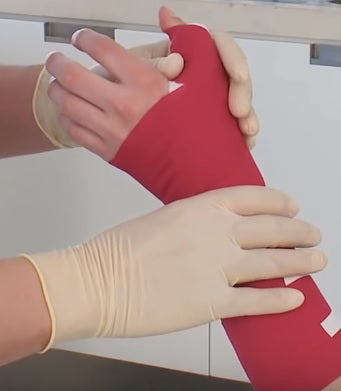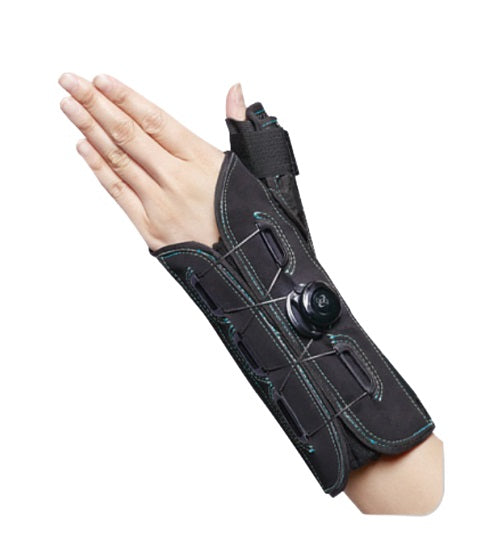I love this air walking boot. It’s like the Cadillac in walking boots.
Can sleep in comfort with it all night.
Thank you!
Works well for my sisters broken leg
Serving USA and Abroad since 2005
Use this bar to show information about your cookie policy.
8 products
Showing 1 - 8 of 8 products
How can one differentiate between a thumb sprain and fracture? You do not need years of medical school to tell. Any patient can easily distinguish them by noting the degree of disability they face. A sprain usually involves the ligaments, and it eventually settles on its own if proper care is taken. There is no need for any surgical intervention in most sprains, though using a thumb brace can help the minor ligament tear heal over time.
Thumb fractures are a different story. In these cases, the deformity is visible in plain sight. Anyone could know on sight alone, if not from the pain, that something is wrong. If one refuses early treatment, it may lead to complications or even complete loss of function of the affected thumb. Thumb braces are not voluntary in this case — they can make a crucial difference in the health of your digit.
Whether your finger is sprained or fractured, a good thumb brace — emphasis on good — can do you a lot of good. Here at OrthoTape.com, we provide several high-quality products to support thumbs during any health issue. We are highly selective in what we offer, so you can trust that any brace you get through us will give great support and relief.
Management of Thumb Fracture and Sprain: Important points to determine
a broken thumb.
Thumb Fractures
The thumb or “pollux” comprises of two bones, anatomically termed
as the phalanges. The bone which connects the phalanges to the wrist bones is
known as the first metacarpal. Any of these 3 bones can be injured, thereby
leading to a fracture. However, the first metacarpal is the most commonly
fractured bone when it comes to thumb fractures. Thumb bones can be broken due
to a multitude of reasons but the following ones are the most important:
1.
Forceful twisting of the thumb joints
2.
Falling on your hands resulting in
trauma
3.
Stretching the thumb back too far
4.
Poor bone health i.e. diminished
calcium levels in the body
5.
Any underlying bone pathology
People who are engaged in contact sports or sports that use some
kind of handheld equipment are more prone to sustain these kinds of injuries. Wrestlers,
football and hockey players, and skiers are at a higher risk for such fractures.
Following are a few symptoms of a thumb fracture:
1.
Swelling and redness in the affected
thumb
2.
Joint weakness
3.
Pain and tenderness
4.
Restricted mobility
5.
Apparent deformity of thumb anatomy
6.
Inability to grasp objects
7.
Tingling and numbness in the hands
8.
Cold feeling in the thumb due to a disrupted
blood supply
Treatment
1. First aid: If you ever suspect that you might have fractured your thumb then
put it under running cold water or apply ice bags to the swollen area
immediately. Immobilizing the thumb along with the application of external
splinting can help prevent any extensive damage. Also, keep the hand elevated
to prevent blood loss and to reduce the thumb swelling as well.
2. Closed reduction
with spica cast: Upon examination, if the consultant
tells you that the bones are not that far out of place then he might be able to
set the bones without having to go for surgery. This method is known as a closed
reduction. It may be slightly painful for the patient, so they mostly inject
local anesthetics at the site of maximum inflammation to smoothen the whole
procedure. In the next step, a special cast is applied for bone reduction, commonly
known as a thumb spica cast. This is usually kept in place for a total
of 6 weeks and it holds the thumb while the fractured bone heals. It keeps the
thumb tight in its place by covering it and the forearm, which ensures maximum healing
efficacy.
3. Surgical
Treatment: If there are a lot of scattered
pieces of bone fragments, then it is impossible to treat the fracture via
closed reduction. The patient will then require the expertise of an orthopedic
surgeon.
A. If the first metacarpal is broken then this is called Bennett
fracture and to treat this, a surgeon inserts wires and screws through the
skin to hold the pieces tight in their position and ensure adequate bone healing.
B. In another scenario where there are multiple cracks at the base of
the thumb, the surgeon usually inserts a small implant to hold the fragments
together. This fracture is known as Ronaldo fracture and the treatment
done is called open reduction with internal fixation.
C. The third method which may be adopted is called external fixation
in which the surgeon will extend the metallic plate outside the skin.
Thumb Sprain
Thumb sprain usually occurs when the ligaments keeping the thumb in
place are stretched beyond their limits eventually leading to their rupture.
This happens when some massive force bends the thumb backward, away from the
palmar surface of the hand. Most of the patients falling on the outstretched
hands present with this complaint. The most commonly affected ligament is the ulnar
collateral ligament (UCL). It disallows the thumb from undergoing dislocation
and bending too far away.
A sprained thumb is also known as a skier’s thumb as the
athletes participating in this sport often strike their thumbs with the skiing
poles at high speeds. This might cause tears in the UCL. Another condition known as the gamekeeper’s
thumb involves the avulsion of the ligament from its insertion point. This
is a form of chronic sprain, it gets its name as it was originally called the
Scottish gamekeepers (rabbit keepers) as these people commonly used their index
fingers and thumbs to break the neck of a small game.
The movement of the thumb becomes quite unstable following a tear
in this ligament and this may also weaken your ability to grasp objects.
Following are the symptoms involved in this disease:
1.
Stiffness at the base of the thumb
2.
Pain and discomfort in the affected
joints
3.
Limitation of movement
4.
Difficulty in pinching objects such
as tying shoelaces
5.
Swelling and bruising around the
thumb
Treatment
1. First Aid: The first and foremost action that the patient can take by himself
is applying ice packs to the affected area. Refrain from excessive use of the
thumb to prevent any further damage. Wrapping the area with a cloth can put
pressure on the sprain and mitigate the throbbing pain. Elevation of the affected
hand above the level of the heart is also needed to prevent high perfusion of
the swollen area which in turn, helps reduce the extent of inflammation. After
some settlement of the pain, it is necessary to visit the physician because
leaving a sprain or minor fracture untreated can even result in permanent loss
of function in the injured thumb.
2. Non-surgical
treatment: To treat the minor sprain, the
physicians will normally advise using a thumb spica splint. The splint
is required to be worn by the patient until the ligament comes back to its
original form. This usually takes around 6 weeks. In general, splints are
applied to limit thumb mobility and provide mechanical support.
3. Surgical treatment:
In case of severe and persistent pain, surgery is the only remedy
for complete restoration of normal thumb anatomy. The procedure involves
reconnecting the ligament to the bone or repairing the avulsion using special
bone anchors or screws. After the surgery, the patient still has to wear the
splint for the upcoming 6-12 weeks to protect the repaired ligament and to
ensure complete healing of the joint.
How to differentiate
between a thumb sprain and fracture?
The patient can easily differentiate between a thumb sprain and
fracture by noting the degree of disability he faces. A sprain usually involves
the ligaments and eventually settles on its own if proper care is taken. There
isn’t any need for surgical intervention in most of the sprains as minor ligament
tears gradually heal over time. But in thumb fractures, the deformity is
visible in plain sight, and refusal of early treatment may lead to
complications or even complete loss of function of the affected thumb. Therefore,
the patient needs to take precautionary measures in each situation, and
consulting a physician can significantly mitigate most of the problems further
on.
How to prevent thumb
sprains and fractures?
It is very difficult to eliminate any chance of causing sprained
thumbs if the occupation of a person demands their repetitive utilization. But
care can be taken to prevent any such mishap from occurring in the future. For
that purpose, the following tips are recommended:
1.
Strengthen surrounding muscles of
the arm: A regular exercise involving extensor and flexor muscles of the arm
helps establish greater control over the wrist movement, and therefore, a
person can easily sustain a more intense shock from activities such as contact
sports and skiing.
2.
Avoiding activities that tend to over-extend
the thumb.
3.
Maintaining a healthy diet replete
with proteins and vitamin D.
4.
A regular intake of dairy products to
provide the body with sufficient calcium to support adequate bone health.
5.
Thumb exercises should be repeated daily
to provide conditioning and rehabilitation for the recovering fractured or
sprained thumb.
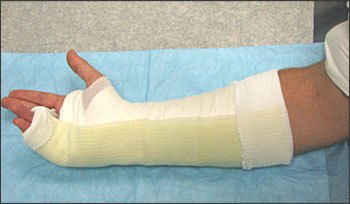
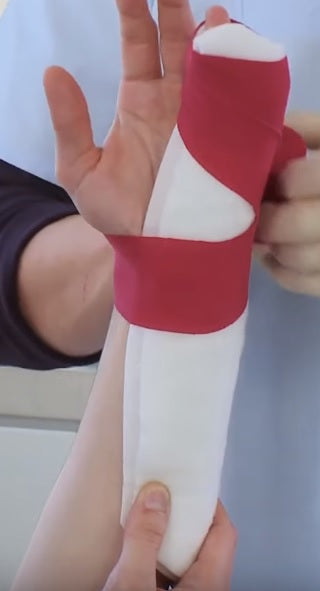
I love this air walking boot. It’s like the Cadillac in walking boots.
Can sleep in comfort with it all night.
Thank you!
Works well for my sisters broken leg

